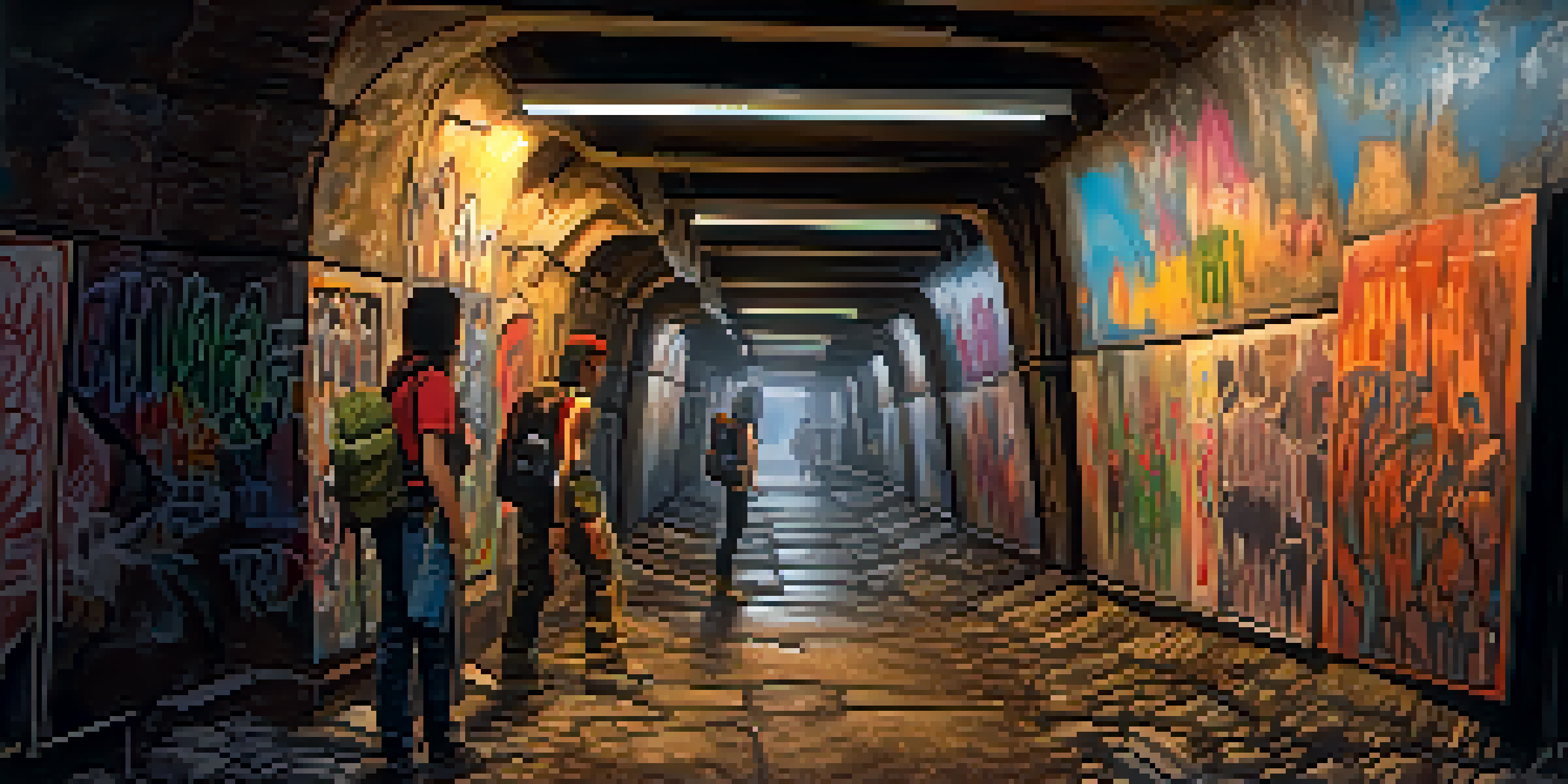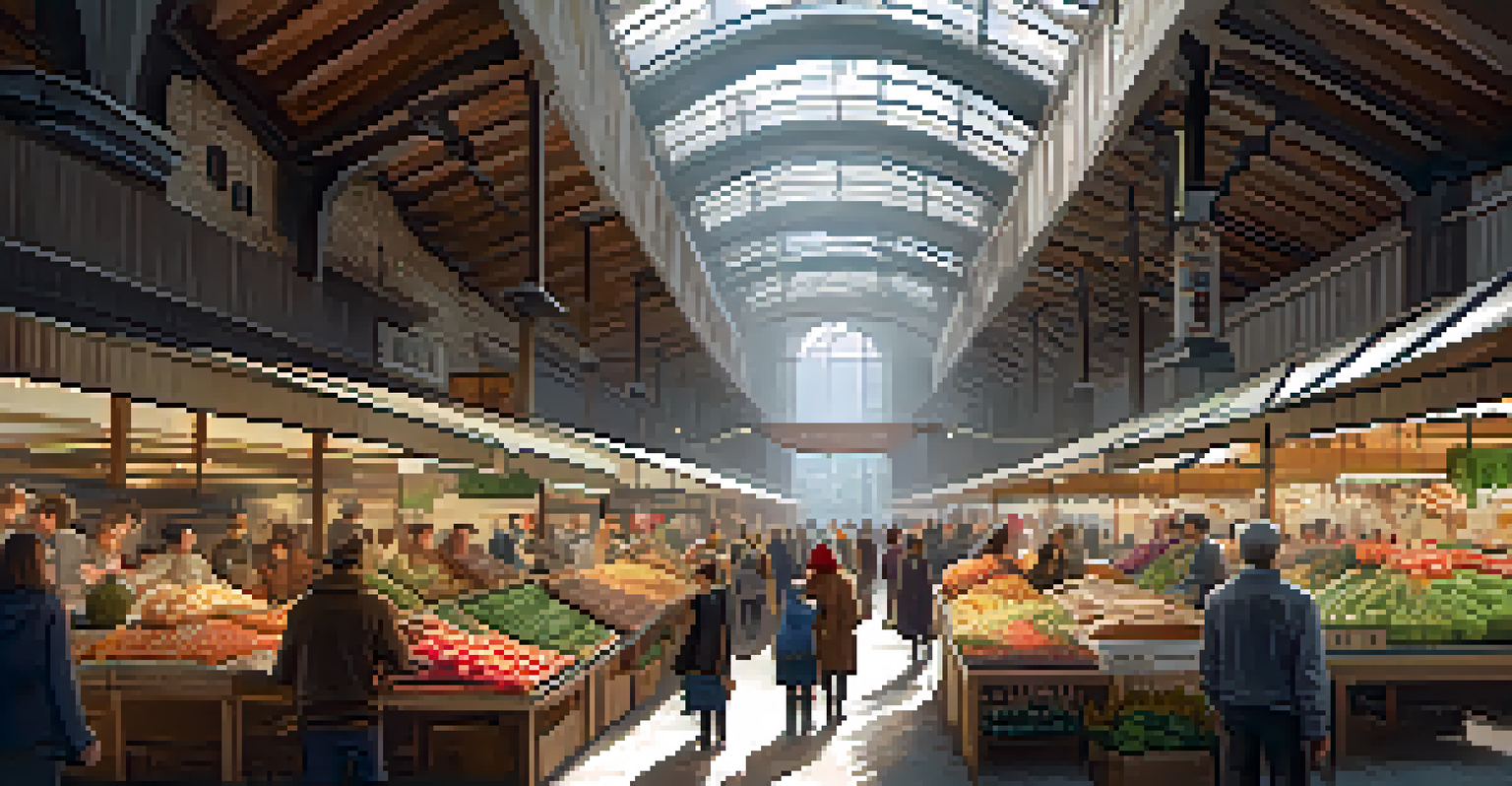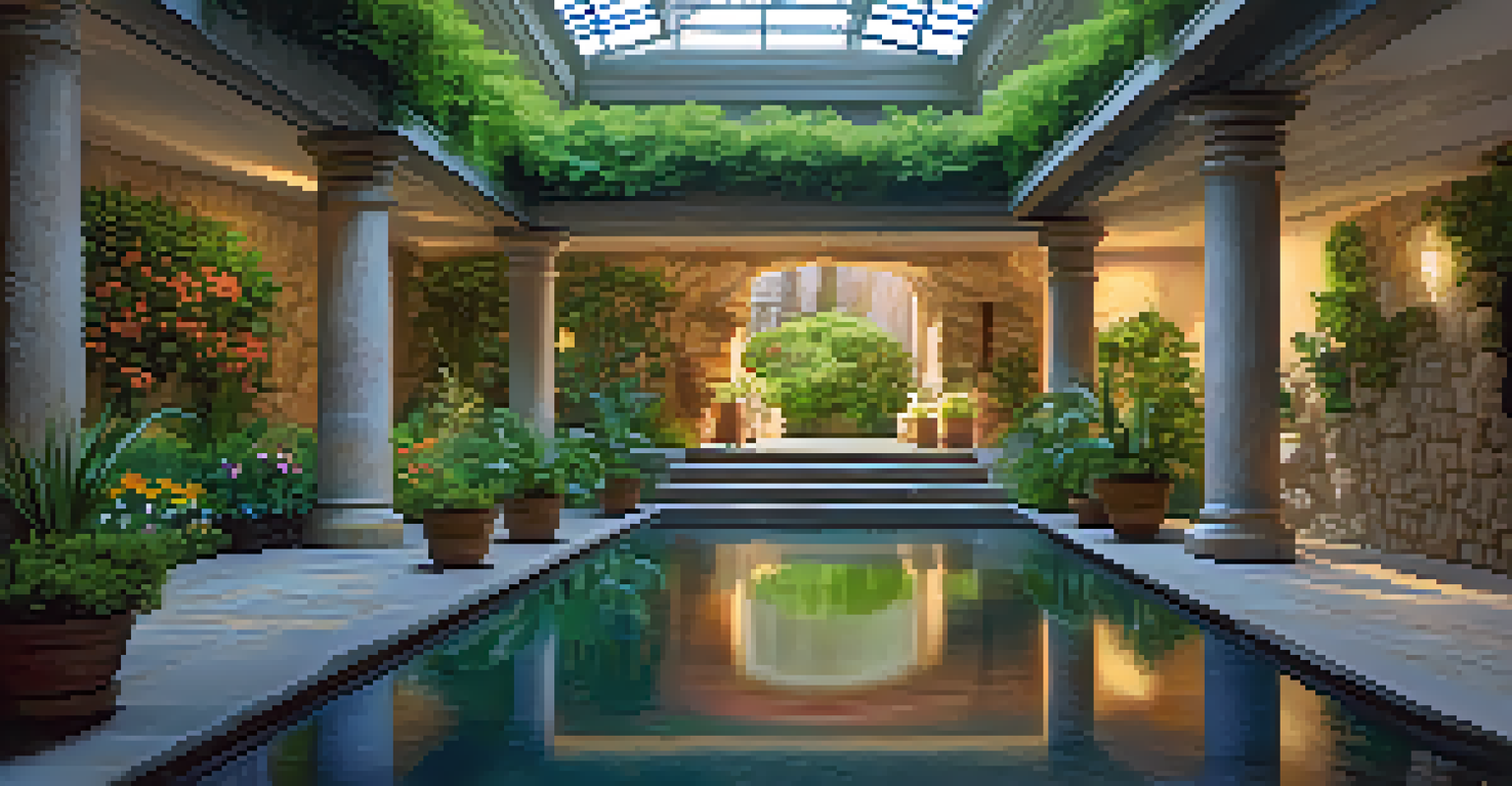Exploring Underground Urban Spaces: A Hidden World

The Fascinating History of Underground Cities
Underground urban spaces have been part of human civilization for centuries, often serving as refuge and shelter. Cities like Paris, with its catacombs, and Rome, with its extensive tunnels, showcase how these hidden areas have evolved. They reflect the unique historical challenges and innovations of the societies that created them.
The future belongs to those who believe in the beauty of their dreams.
These spaces tell stories of resilience, from the ancient Romans who constructed vast structures beneath their bustling city to the modern-day cities that utilize subterranean networks for transportation and utilities. It's intriguing how what lies beneath often carries as much significance as what’s on the surface.
Moreover, the underground serves as a canvas for artists and historians alike, turning forgotten tunnels into galleries and museums. This intersection of history and creativity creates a rich narrative that continues to captivate urban explorers and history buffs.
Why Urban Spaces Go Underground
Urban areas face challenges like overcrowding, limited space, and pollution, prompting cities to think creatively. By building underground, cities can expand their infrastructure without sacrificing valuable surface land. This approach not only alleviates congestion but also preserves green spaces above ground.

Moreover, underground spaces offer natural insulation, helping to manage energy consumption in buildings. They provide a cool refuge during hot summers, reducing the need for excessive air conditioning and promoting energy efficiency.
Underground Cities: A Historical Refuge
Underground urban spaces have been crucial throughout history, serving as shelters and innovative solutions to societal challenges.
Additionally, underground development can contribute to disaster preparedness, offering safe zones during floods or earthquakes. As cities grow and climate change poses new threats, these hidden spaces may become vital for urban resilience.
Exploring the Subterranean Landscape
Venturing into underground urban spaces can feel like stepping into another world. From abandoned subway stations to bustling marketplaces, these areas are often rich in atmosphere and history. Imagine wandering through dimly lit tunnels, where echoes tell tales of the past while street artists bring color to the gray walls.
In every walk with nature, one receives far more than he seeks.
Take New York City’s High Line, for instance; while it’s not entirely underground, it highlights how urban spaces can creatively repurpose existing structures. Similarly, the underground shopping centers of Tokyo offer a vibrant contrast to the busy streets above, showcasing how diverse and dynamic these hidden worlds can be.
Every journey underground is unique, filled with surprises that challenge our perceptions of urban life. As more people discover these spaces, they begin to appreciate the intricate layers that make up our cities.
Urban Legends and Myths of the Underground
With every hidden space comes a wealth of stories—some true, others embellished. Urban legends often thrive in underground settings, where darkness and mystery create the perfect backdrop for spooky tales. Stories of ghostly apparitions in old subway stations or hidden treasure in forgotten tunnels capture the imagination.
These myths often reflect societal fears and fascinations, providing a glimpse into the psyche of urban dwellers. They also highlight how underground spaces can evoke strong emotions, from fear to curiosity, drawing adventurers to explore the unknown.
Sustainability in Urban Planning
Utilizing underground spaces can significantly enhance sustainability efforts in cities by preserving surface land and minimizing environmental impacts.
Such legends can serve as a way to connect with the past, reminding us that every city has its secrets waiting to be uncovered. Engaging with these stories adds another layer of richness to our exploration of the underground.
The Role of Technology in Urban Exploration
As we explore these underground realms, technology plays a pivotal role in enhancing the experience. From advanced mapping tools to drones, tech enables us to navigate and document spaces that were once difficult to access. This fusion of technology and exploration allows for a deeper understanding of urban environments.
Virtual reality (VR) is also making waves in this area, allowing people to experience underground spaces without physically being there. Imagine walking through a historic catacomb or an abandoned subway station, all from the comfort of your home—this technology opens doors for education and preservation.
Moreover, social media has transformed the way we share these experiences, bringing urban exploration to wider audiences. By documenting our adventures, we create a community that values and promotes the exploration of these hidden worlds.
Sustainability in Underground Urban Development
Sustainability is a growing concern in urban planning, and underground spaces can contribute significantly to eco-friendly initiatives. By utilizing existing underground structures, cities can minimize the environmental impact of new construction. This approach not only conserves resources but also promotes a more sustainable urban lifestyle.
Green roofs and urban gardens are often paired with underground spaces to create a harmonious balance between nature and urbanization. These initiatives enhance biodiversity and provide vital green spaces in otherwise crowded cities, fostering a healthier environment for residents.
Tech Enhances Urban Exploration
Advancements in technology, such as VR and mapping tools, have revolutionized how we explore and document underground urban environments.
Ultimately, the integration of sustainability principles into underground development showcases how innovation can lead to better urban living. As cities continue to evolve, the underground may play an essential role in creating a more sustainable future.
The Future of Underground Urban Spaces
Looking ahead, the potential for underground urban spaces is vast. As cities face increasing challenges from population growth and climate change, the need for innovative solutions becomes paramount. Envisioning a future where underground areas are fully utilized for living, working, and recreation is not just a dream—it’s becoming a necessity.
Emerging technologies, such as smart city initiatives, could enhance the functionality and safety of these spaces. By integrating sensors and data analytics, cities can better manage underground infrastructure, ensuring it meets the needs of residents while minimizing environmental impact.

As we embrace this hidden world beneath our feet, it’s essential to continue exploring and advocating for sustainable practices. The future may very well lie underground, and it’s up to us to shape it sustainably.